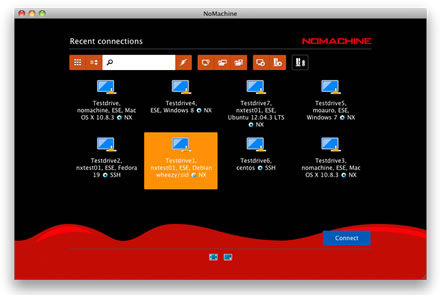
Higher-end products include multi compute-node clustering and fail-over capabilities. Other features include USB redirection, session recording, file transfer, multimedia capability and browser-based access.

Users connect from a Windows, Mac OS X, iOS, Android, Linux, Raspberry, Linux ARM or Web browser. NoMachine NX can be installed on Windows, Mac, Linux, Raspberry and Linux ARM computers to let users remotely access the desktop over the network. It was in 2013 that NX software became NoMachine software. Starting in 2013, with the release of version 4.0, NX became closed-source. In 2010, the company announced they would be releasing the technology under a proprietary license. The last update to this open-source version was released in 2012. The core compression technology was released under the GNU GPL2 license (NX 1) for Linux servers, whilst other components such as the NX Server and NX Client programs remained proprietary, on February 14, 2003. It wrapped remote connections in SSH sessions for encryption. In 2003, the compression and transport protocol NX was created to improve the performance of the native X display protocol so it could be used over slow connections such as dial-up modems.

NX's design was derived from the Differential X Protocol Compressor project (DXPC). It is developed by the Luxembourg-based company NoMachine. # must be the display owner set in this key.NX technology, commonly known as NX or NoMachine, is a proprietary cross-platform software application for remote access, desktop sharing, virtual desktop (on Linux only) and file transfer between computers. # server supports only one concurrent connection, the connecting user # NoMachine create the new display without querying the user. # When 'CreateDisplay' is enabled, specify the display owner and let Verify that the NX installer's userid isn't set as the default owner of every display:

Among other things, NoMachine will run as a daemon and will depend on a local nx account in the passwd file that has dependencies in the local hosts's /etc and /var directories: Install NoMachine locally on the remote machine rather than into the shared /util filesystem.


 0 kommentar(er)
0 kommentar(er)
